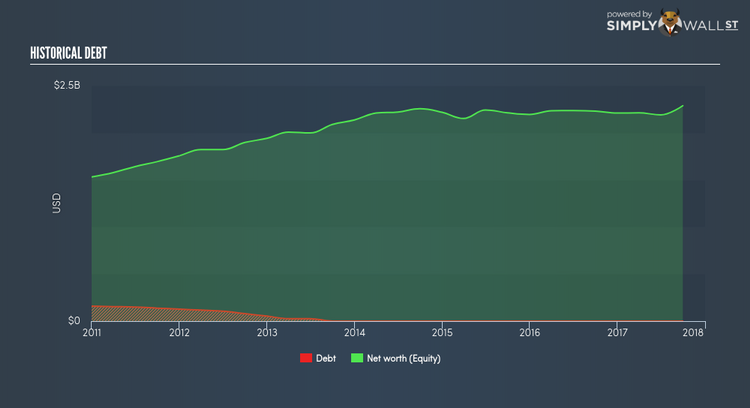With An ROE Of 12.25%, Has Ansys Inc’s (NASDAQ:ANSS) Management Done A Good Job?

Ansys Inc’s (NASDAQ:ANSS) most recent return on equity was a substandard 12.25% relative to its industry performance of 12.98% over the past year. An investor may attribute an inferior ROE to a relatively inefficient performance, and whilst this can often be the case, knowing the nuts and bolts of the ROE calculation may change that perspective and give you a deeper insight into ANSS’s past performance. I will take you through how metrics such as financial leverage impact ROE which may affect the overall sustainability of ANSS’s returns. View our latest analysis for Ansys
Breaking down Return on Equity
Firstly, Return on Equity, or ROE, is simply the percentage of last years’ earning against the book value of shareholders’ equity. It essentially shows how much the company can generate in earnings given the amount of equity it has raised. While a higher ROE is preferred in most cases, there are several other factors we should consider before drawing any conclusions.
Return on Equity = Net Profit ÷ Shareholders Equity
ROE is measured against cost of equity in order to determine the efficiency of Ansys’s equity capital deployed. Its cost of equity is 9.10%. While Ansys’s peers may have higher ROE, it may also incur higher cost of equity. An undesirable and unsustainable practice would be if returns exceeded cost. However, this is not the case for Ansys which is encouraging. ROE can be broken down into three different ratios: net profit margin, asset turnover, and financial leverage. This is called the Dupont Formula:
Dupont Formula
ROE = profit margin × asset turnover × financial leverage
ROE = (annual net profit ÷ sales) × (sales ÷ assets) × (assets ÷ shareholders’ equity)
ROE = annual net profit ÷ shareholders’ equity
The first component is profit margin, which measures how much of sales is retained after the company pays for all its expenses. Asset turnover reveals how much revenue can be generated from Ansys’s asset base. The most interesting ratio, and reflective of sustainability of its ROE, is financial leverage. Since ROE can be artificially increased through excessive borrowing, we should check Ansys’s historic debt-to-equity ratio. Currently, Ansys has no debt which means its returns are driven purely by equity capital. This could explain why Ansys’s’ ROE is lower than its industry peers, most of which may have some degree of debt in its business.
What this means for you:
Are you a shareholder? Even though ANSS returned below the industry average, its ROE comes in excess of its cost of equity. Since ROE is not inflated by excessive debt, it might be a good time to add more of ANSS to your portfolio if your personal research is confirming what the ROE is telling you. If you’re looking for new ideas for high-returning stocks, you should take a look at our free platform to see the list of stocks with Return on Equity over 20%.
Are you a potential investor? If ANSS has been on your watch list for a while, making an investment decision based on ROE alone is unwise. I recommend you do additional fundamental analysis by looking through our most recent infographic report on Ansys to help you make a more informed investment decision.
To help readers see pass the short term volatility of the financial market, we aim to bring you a long-term focused research analysis purely driven by fundamental data. Note that our analysis does not factor in the latest price sensitive company announcements.
The author is an independent contributor and at the time of publication had no position in the stocks mentioned.


